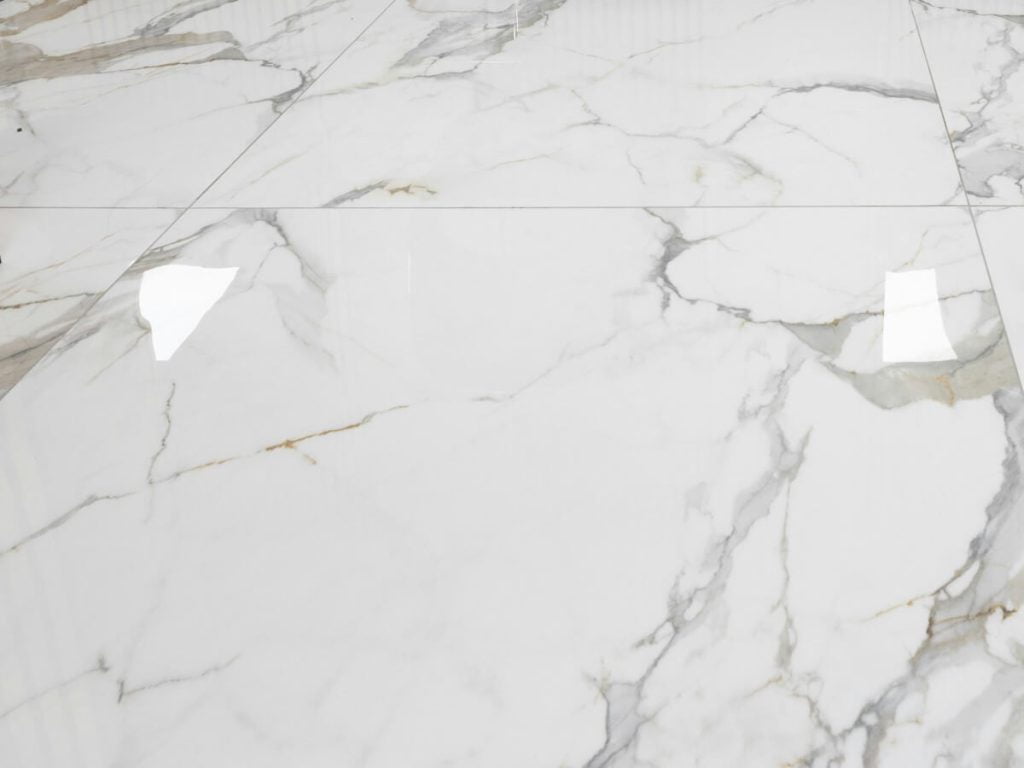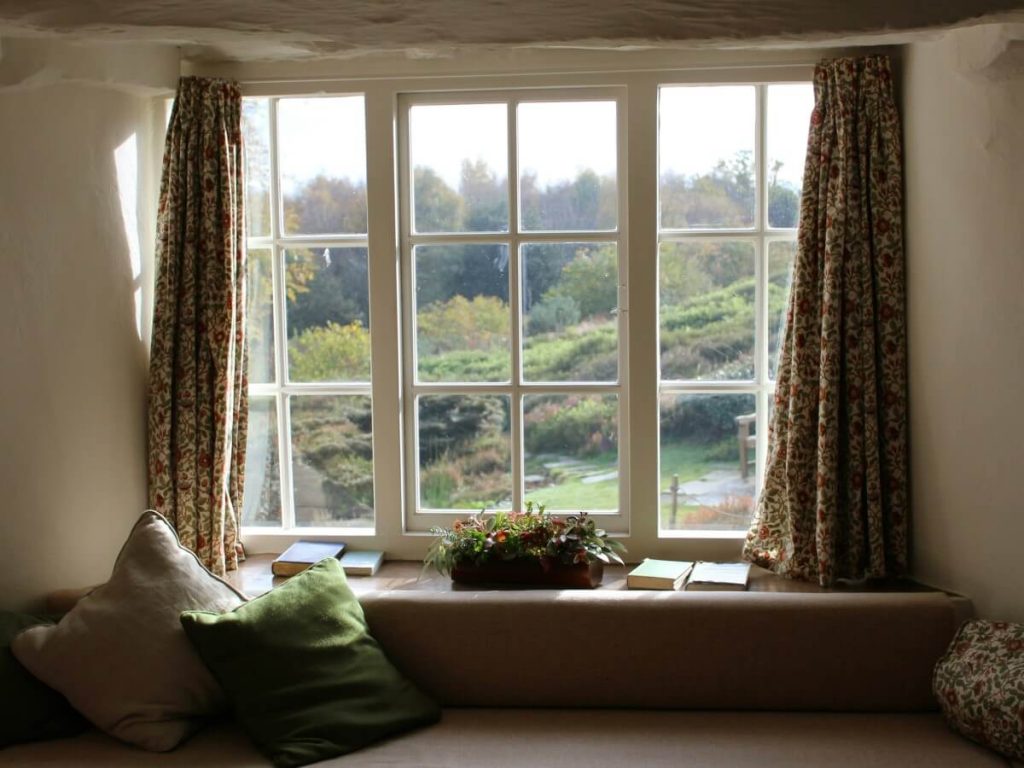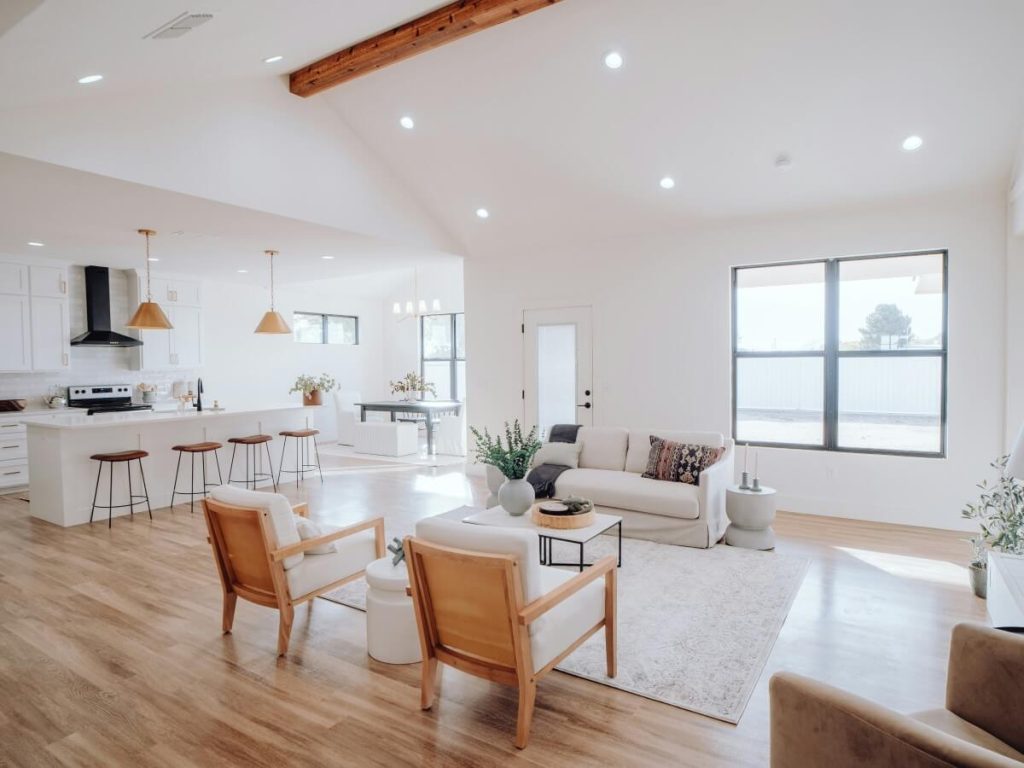How to Design with Natural Light in 7 Actionable Steps
Learn how to design with natural light to brighten your home.
Natural light is one of the most powerful elements in interior design. It can make spaces feel larger, warmer, and more inviting, enhancing both the aesthetic and functionality of a home. Designing with natural light not only improves the ambiance but also supports your health and well-being. Here’s how you can maximize natural light in your designs, with practical strategies that balance light, space, and comfort.
Table of Contents
1. Building Orientation

One of the most fundamental aspects of designing with natural light starts with building orientation. The way your home or building is positioned relative to the sun can dramatically affect how much natural light enters each room.
South-Facing Orientation
In the northern hemisphere, orienting the building so that main living spaces face south maximizes sunlight throughout the day, especially in colder climates where warmth is beneficial.
East and West Exposure
East-facing rooms receive gentle morning light, perfect for bedrooms, while west-facing rooms get warm, golden light in the afternoon—ideal for living areas.
Consider Seasonal Changes
Keep in mind how sunlight shifts with the seasons. Designing with overhangs or shades can help control direct sunlight in the summer while still allowing light in during the winter.
Pro Tip:
When planning a renovation or new build, consider how the sun moves across your property to optimize light in key areas.
2. Reflective Surfaces

Using reflective surfaces is a smart way to amplify natural light in your space. Reflective materials bounce light around the room, making spaces feel brighter and more dynamic.
Glossy Finishes
Use high-gloss paint on ceilings or reflective backsplashes in kitchens to help disperse light.
Metallic Accents
Incorporate metallic décor elements like brass lamps, chrome fixtures, or mirrored tables to reflect light without overwhelming the room.
Shiny Floors
Polished stone, glossy tiles, or light wood flooring can significantly boost the amount of light reflected throughout your space.
Did You Know?
Reflective surfaces can enhance light levels by up to 20%, making a room appear more open and vibrant.
3. Window Placement

The placement and size of windows are crucial in determining how natural light interacts with your space. Thoughtfully designed windows can flood your home with light, creating a bright and cheerful environment.
Floor-to-Ceiling Windows
Large, expansive windows maximize light and create a seamless connection with the outdoors.
Clerestory Windows
These are positioned high on walls and bring in natural light without compromising privacy, making them perfect for bathrooms or areas facing neighbors.
Corner Windows
Windows placed on two adjoining walls bring light in from multiple angles, reducing shadows and brightening the entire room.
Pro Tip:
Place windows opposite doors or openings to allow light to travel deeper into the home, maximizing its impact.
4. Light-Colored Finishes

Using light-colored finishes is one of the simplest ways to enhance natural light. Light shades reflect more light, making spaces feel larger and brighter.
White and Soft Neutrals
Paint walls, ceilings, and even floors in whites, creams, or soft pastels to create a light, airy feel.
Light-Colored Furniture
Choose furniture in lighter fabrics and finishes to prevent the absorption of light and keep the space open.
Translucent Materials
Frosted glass or translucent partitions can diffuse light beautifully, creating a soft glow without blocking it.
Did You Know?
Light colors can reflect up to 80% of the light that hits them, helping to distribute brightness evenly across a room.
5. Solar Screens

While natural light is wonderful, direct sunlight can sometimes be too harsh, causing glare and heat buildup. Solar screens are a practical solution to manage light while maintaining comfort.
Window Films
These films reduce glare and block UV rays without darkening your space, protecting your interiors from sun damage.
Exterior Screens
Installed on the outside of windows, these screens block excessive heat before it enters the home, keeping interiors cool.
Adjustable Shades
Solar shades and blinds can be adjusted throughout the day, allowing you to control the light levels and prevent glare when needed.
Pro Tip:
Choose solar screens that match your décor for a seamless look that blends functionality with style.
6. Open Floor Plans

Open floor plans enhance the flow of natural light, allowing it to travel freely from one area to another. By removing barriers, you can create a light-filled space that feels connected and spacious.
Fewer Walls, More Light
Removing non-load-bearing walls can significantly increase the natural light in your home.
Glass Dividers
Instead of solid walls, use glass dividers or half walls to maintain open sightlines and let light flow through.
Multi-Functional Spaces
Open layouts allow you to use light strategically, making multi-use spaces feel bright and welcoming.
Did You Know?
Open floor plans not only maximize natural light but also improve air circulation, making your home feel fresher and more comfortable.
7. Mirrors and Glossy Surfaces

Mirrors and glossy surfaces are excellent for enhancing light, creating the illusion of space, and adding depth to a room.
Strategically Placed Mirrors
Place mirrors opposite windows to reflect light back into the room, amplifying its effect.
Glossy Furniture
Incorporate glossy or mirrored furniture pieces that catch and bounce light, making even small spaces feel bigger.
Reflective Wall Art
Use mirrored or metallic wall art to not only decorate but also enhance the brightness of your space.
Pro Tip:
Consider using a large statement mirror in darker rooms to instantly brighten the space and add a touch of elegance.
Conclusion
Designing with natural light is about more than just aesthetics; it’s about creating a space that feels warm, inviting, and alive. By carefully considering building orientation, reflective surfaces, window placement, and more, you can make the most of natural light in your home. Embrace these strategies to create a brighter, more beautiful living environment that connects you with the outdoors.
FAQs
Q1: Why is natural light important in interior design?
Natural light enhances the aesthetic of a space, boosts mood, reduces the need for artificial lighting, and creates a healthier living environment.
Q2: How can I maximize natural light in my home?
Use light colors, install large windows, add mirrors, and keep your spaces open and clutter-free to let natural light flow.
Q3: What are some common challenges when working with natural light?
Challenges include glare, heat buildup, and uneven lighting. Using solar screens, reflective surfaces, and thoughtful window placement can help balance these issues.
Q4: Can I use technology to enhance natural light in my space?
Yes, technology like smart shades, light-filtering films, and solar tubes can enhance and control natural light effectively.
Q5: How do I design a room layout that maximizes natural light?
Position key areas like living rooms and kitchens towards the south or east, use open floor plans, and incorporate large or strategically placed windows.
Q6: What are some inspiring examples of spaces that effectively use natural light?
Many modern homes, Scandinavian designs, and glass-walled buildings beautifully utilize natural light through large windows, skylights, and reflective surfaces.
Q7: How can I balance the need for natural light with the need to block glare and heat?
Use adjustable solar screens, sheer curtains, and strategically placed plants to diffuse light, reduce glare, and keep your space comfortable.






